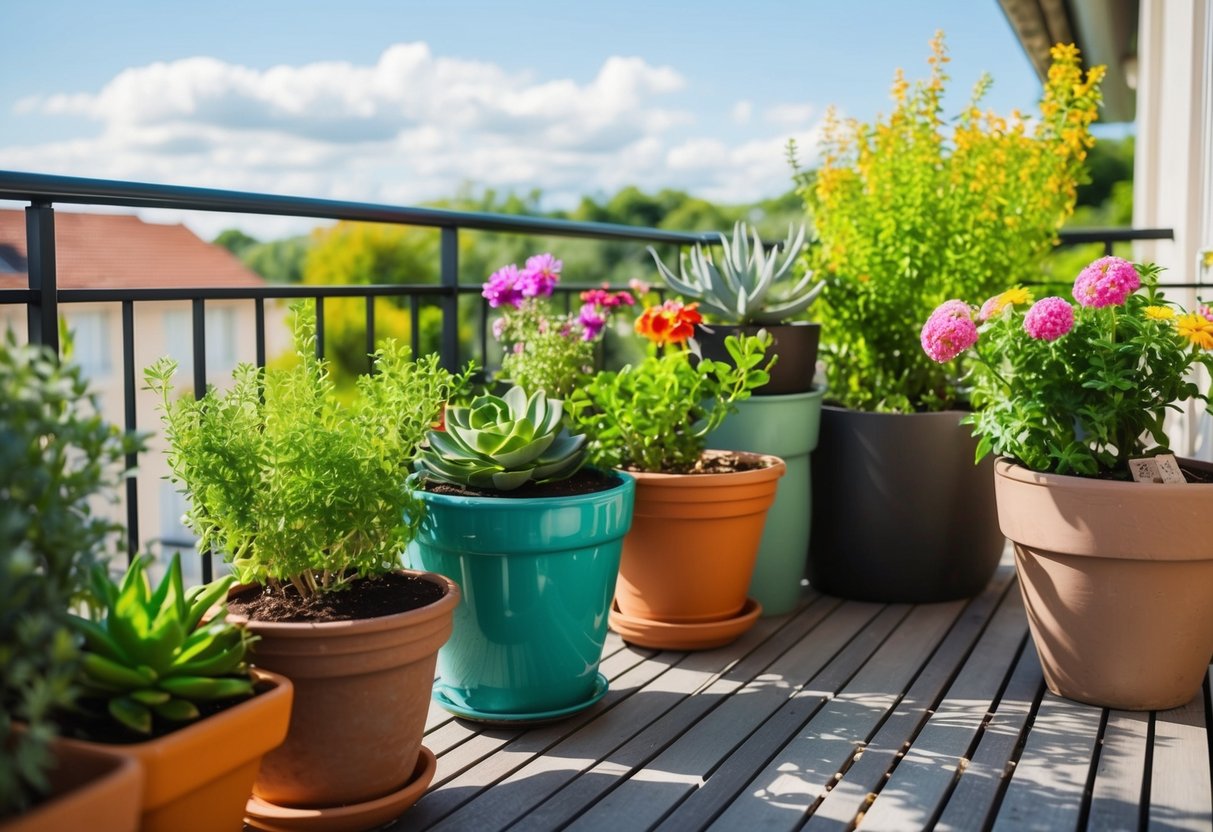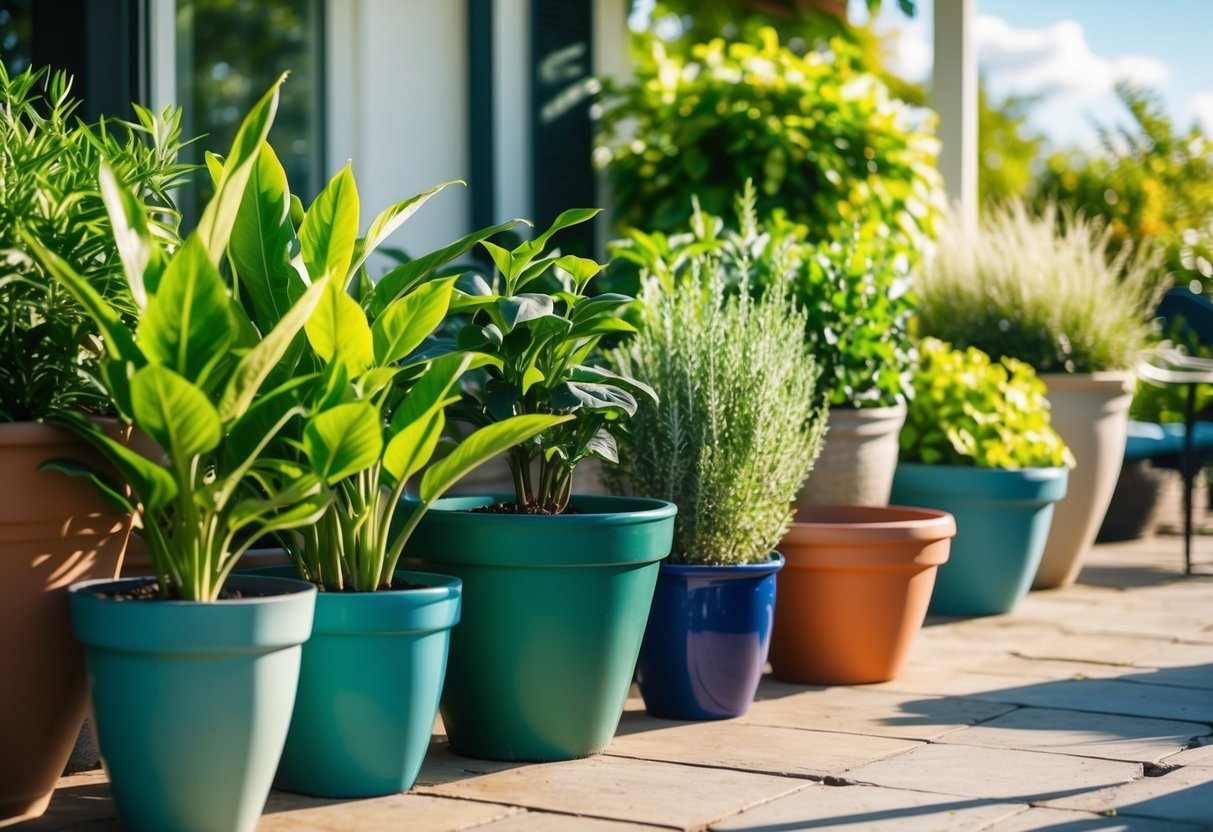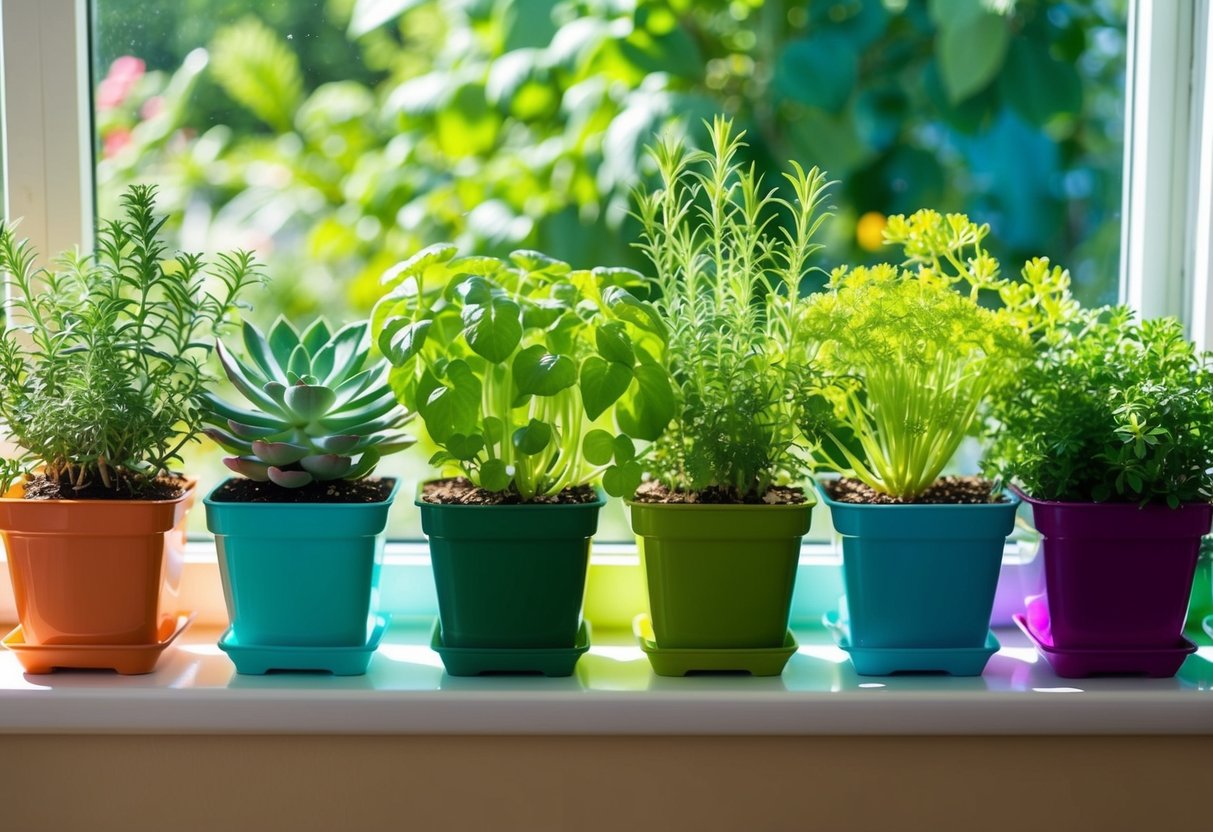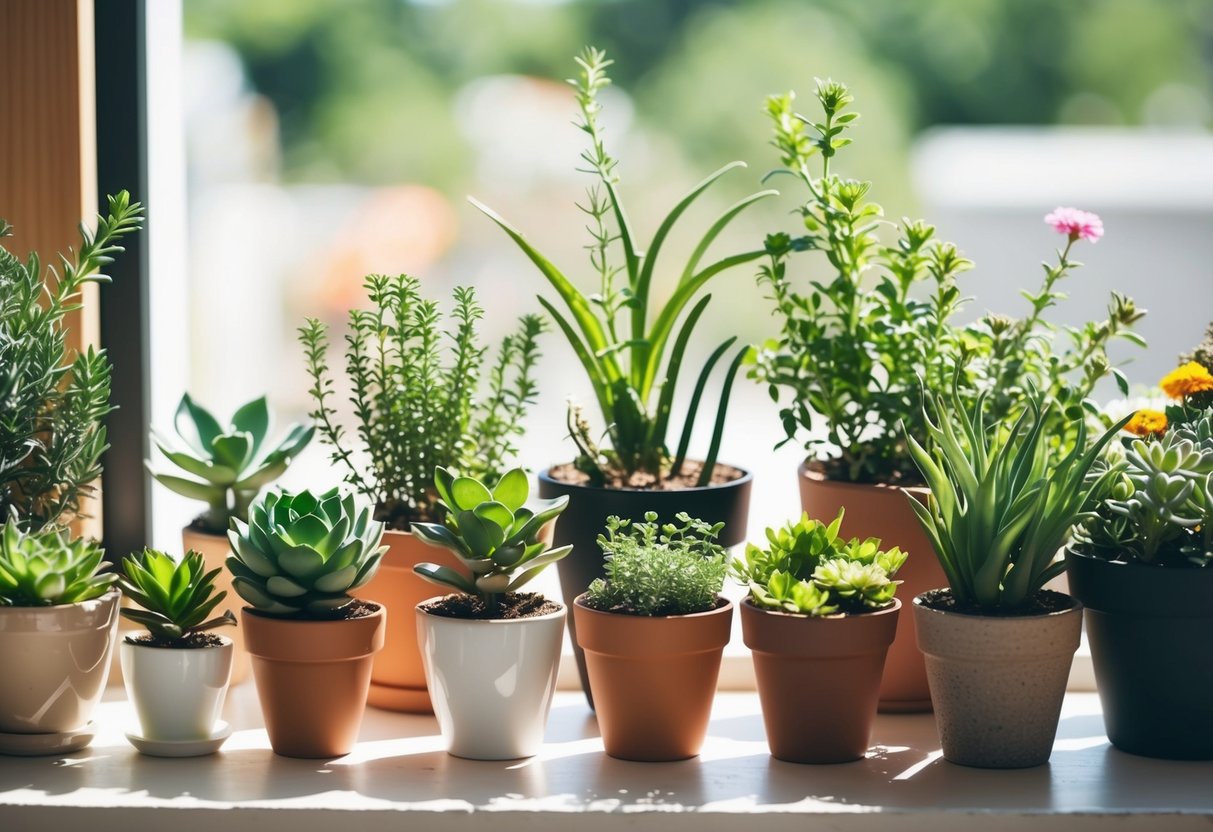What Plants Are Easy to Grow in Pots? Simple Tips for Beginners
Starting a container garden can be a fun and rewarding experience, even if you’re new to gardening. Many plants are perfect for pots, offering vibrant colors and fresh produce with minimal effort. Herbs like rosemary and vegetables like radishes are some of the easiest plants to grow in pots, thriving with just a bit of sunlight exposure and watering. Experimenting with such plants allows you to enjoy gardening regardless of the size of your space.

Container gardening is great for anyone who wants to enjoy fresh flavors at their fingertips. For those interested in growing vegetables in pots, lettuce is a fantastic choice. It’s beginner-friendly, needs little space, and does well in cooler weather. This means you can enjoy your harvest in both spring and fall.
If you crave more variety, consider tomatoes. They love heat and direct sunlight, and they can transform your patio into a lush green oasis. Explore different varieties, such as bushy cherry tomatoes, which are perfect for pots. Embrace the joy of growing your own food with these easy options, and you’ll soon discover the endless possibilities of container gardening.
Choosing the Right Containers

When starting a container garden, picking the right pots is crucial. It’s important to consider both the size and material of the containers, along with ensuring proper drainage to help your plants grow well. Let’s dive into these topics.
Container Size and Material
Choosing the right container size is vital for the health of your plants. Containers should be large enough to support your plant’s root system. For instance, a small herb like basil can thrive in a pot around 6-8 inches wide, while larger plants like tomatoes need pots that are at least 12 inches in diameter.
The material of the container also matters. Ceramic pots are attractive and sturdy but may not fare well in extremely cold weather. Fabric pots are lightweight and promote better air circulation. Colorful pots can add aesthetic appeal to your garden space. Hanging baskets and window boxes offer flexibility and can save space.
The Importance of Drainage
Good drainage is a key factor in container gardening to prevent water from accumulating at the bottom of the pot. Without proper drainage, plants can suffer from root rot. Always choose pots with drainage holes to ensure excess water can escape.
For additional drainage, you might consider adding a layer of pebbles at the bottom of your pots. Remember, different materials affect drainage: plastic and ceramic pots retain more moisture compared to fabric ones. Make sure to check the drainage regularly, especially after heavy rains or extensive watering. Proper drainage ensures your plants remain happy and healthy.
Selecting Suitable Plants

Growing plants in pots can be both rewarding and fun. Choosing the right plants for container gardening allows you to enjoy fresh vegetables, tasty herbs, and beautiful flowers even in small spaces.
Best Vegetables for Container Gardening
Certain vegetables thrive in pots, making them perfect for container gardening. Tomatoes, especially cherry varieties, do well with sufficient sunlight and regular watering. Peppers, like bell and hot peppers, are also great choices as they require minimal space.
- Radishes and carrots can be grown in deep containers with loose, well-draining soil.
- Lettuce and spinach are leafy greens that can flourish in shallow pots and offer a continuous harvest.
Strawberries are a sweet treat that can easily be grown in pots with good drainage. Cucumbers and beans typically need support in the form of a trellis or cage to grow effectively.
Favorable Herbs and Salad Greens
Growing herbs in pots makes it easy to add fresh flavors to your meals. Basil, chives, and rosemary are popular choices that adapt well to container life. They need less space and can thrive with the proper care.
You can also try parsley and green onions. These herbs prefer sunny spots and regular watering. Microgreens are another option if you’re looking for a quick-growing choice for salads or garnishes.
Salad greens like chard and spinach are easy to grow in pots as well. They perform best in cool weather, so positioning them in partial shade during summer months can extend their growing season.
Flowers and Ornamental Plants
Adding color to your container garden is easy with flowers. Impatiens and fuchsia are perfect for pots and bring vibrant blooms to any space. They flourish in shady areas and add a splash of color without much effort.
Succulents are hardy and drought-tolerant, making them ideal for small containers. Asparagus ferns add texture and greenery, while ornamental sweet potato vines spill beautifully over the edges of pots.
You can create stunning combinations by mixing these flowers and plants, turning your balcony, porch, or patio into a colorful oasis.
Soil and Fertilization

Growing plants in containers requires the right potting mix and proper fertilization to thrive. You’ll need to pay attention to these elements to ensure your plants have what they need for healthy growth.
Choosing the Right Potting Mix
Selecting the right potting mix is crucial for container gardening. You should look for an organic potting mix that retains moisture but also drains well. This is important for plants like tomatoes, which need consistent water levels to thrive in pots.
To make sure your plants get the right nutrients, choose a mix labeled as “nutrient-rich” or “fortified.” Some mixes are specially designed for specific plants, like growing tomatoes in containers. This can make your gardening journey smoother.
Avoid using garden soil in pots. It often compacts and doesn’t drain well, potentially leading to root rot. A good potting mix provides a lighter, fluffier base that encourages healthy root growth.
Nutrients and Fertilization
Plants in containers rely heavily on you for nutrients. Fertilization becomes essential once the initial nutrients in the potting mix are used up. Consider using a balanced liquid fertilizer that contains nitrogen, phosphorus, and potassium. Apply as directed, usually every couple of weeks.
Compost tea or organic fertilizers can also provide a steady supply of nutrients. You might prefer organic options as they promote a healthy ecosystem in your container.
For foliar feeding, a diluted liquid fertilizer sprayed on the leaves can give the plants a quick nutrient boost. Just be sure to follow the instructions on how much to apply to avoid over-fertilizing.
By keeping up with these practices, you’ll help your container plants flourish.
Caring for Your Potted Plants

Taking care of potted plants might seem tricky, but it’s all about understanding their needs. You’ll need to focus on watering, getting the right amount of sunlight, and keeping up with some simple maintenance tasks.
Watering Techniques
Watering potted plants properly is essential for their health. Use a pot with drainage holes so excess water can escape. This prevents roots from sitting in water, which can cause root rot. It’s important to water slowly and let the soil soak it up.
Check the soil moisture by sticking your finger about an inch deep into the soil. If it feels dry, it’s time to water. Early morning is the best time for watering, as it allows plants to absorb moisture before the heat of the day is at its peak. Overwatering is a common mistake, causing more harm than underwatering. Be mindful and adjust based on weather and plant needs.
Sunlight and Temperature
Potted plants need the right amount of sunlight to thrive. Most need full sun for 6 to 8 hours a day, but some do well in shade. It’s crucial to know the light requirements of your specific plants. Place sun-loving plants like rosemary in sunny spots and keep shade-tolerant plants in less sunny areas.
Temperature is another important factor. Cold nights can affect tender plants, so consider bringing them indoors if temperatures drop. Use location-specific info to ensure the right environment. In extreme heat, move pots to cooler spots or provide shade to prevent stress. Also, rotate pots to ensure even sunlight distribution on all sides.
Pruning and Maintenance
Regular pruning helps potted plants stay healthy and look great. Trim dead or yellowing leaves to encourage new growth. Remove any dead flowers to redirect energy back into the plant. This process, known as deadheading, keeps blooms coming.
Use clean, sharp scissors or pruning shears to avoid damage. Regularly check for pests and diseases. Look on leaves and stems for any signs of trouble. Keep the surface of the soil free from debris to prevent mildew or mold. This routine care ensures your potted plants will thrive all season long.
Troubleshooting Common Issues

When you’re growing plants in containers, you might run into some problems like pests and diseases. These issues can hinder the growth of your plants, so it’s important to tackle them promptly. Use the tips below to keep your container garden thriving.
Pest Control
Pests are a common problem in container gardening. Aphids, spider mites, and slugs can damage your plants. To control these pests, inspect your plants regularly. Look for signs like holes in leaves or sticky residue.
Natural remedies include spraying plants with a mix of water and dish soap. This can deter many insects. For more persistent issues, consider introducing beneficial insects like ladybugs. They eat pests without harming your plants. Also, keep your containers clean to remove eggs and larvae.
Positioning your pots correctly can also help. Keeping them off the ground can deter slugs. Using neem oil or other organic sprays can also keep pests at bay.
Disease Prevention
Diseases like fungal infections can harm your plants. To prevent these, ensure proper drainage in your pots. Waterlogged soil is a breeding ground for fungi. Use pots with drainage holes and consider placing stones at the bottom to improve water flow.
Spacing plants is crucial. Allow enough air to circulate to reduce humidity levels. This lowers the risk of mold and mildew. When watering, try to avoid getting the leaves wet, as damp leaves can invite disease.
If you notice yellowing leaves or strange spots, act quickly. Remove affected leaves to prevent the spread of disease. Sometimes, using a mild fungicide may be necessary. Regularly cleaning tools and pots can also help minimize disease risk.







